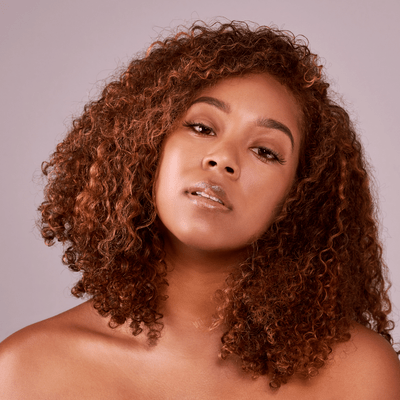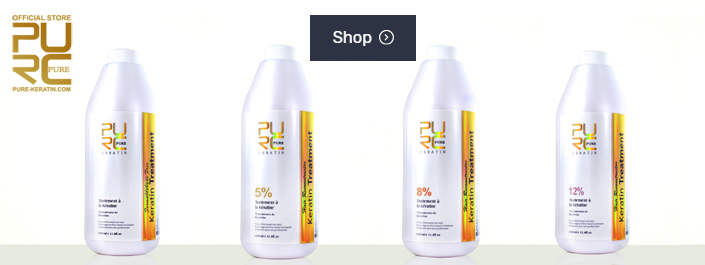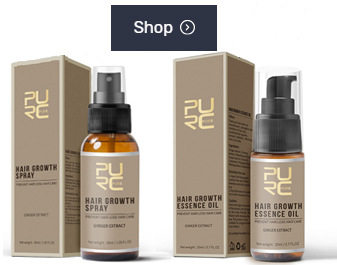7 RELAXED HAIR TIPS + 5 TRANSITIONING HAIR STEPS
PURE KERATIN on 25th Nov 2022
7 RELAXED HAIR TIPS + 5 TRANSITIONING HAIR STEPS
If you're relaxed you can have healthy hair too!
Below are some tips to help you on your relaxed hair journey!
1. Stretch Your Relaxers:
Stretching the time frame between touch ups gives your hair the chance to recover. During this time you must be gentle with your hair. The line of demarcation (where the new growth and relaxed hair ends meet) is very fragile and will break easily if you're not careful.
How long you stretch you relaxer is entirely up to you but attempt to go at least 8 weeks or more if you can.
2.Protein Treatments:
Protein treatments are an excellent way to add strength back into your hair after it's been weaken by the chemical relaxer. This will help to prevent breakage in the long run. Just be careful when using protein treatments because there's something called protein over load that can actually cause breakage.
A good rule of thumb is to make sure you have a good balance of both moisture and protein in your hair regimen at all times.
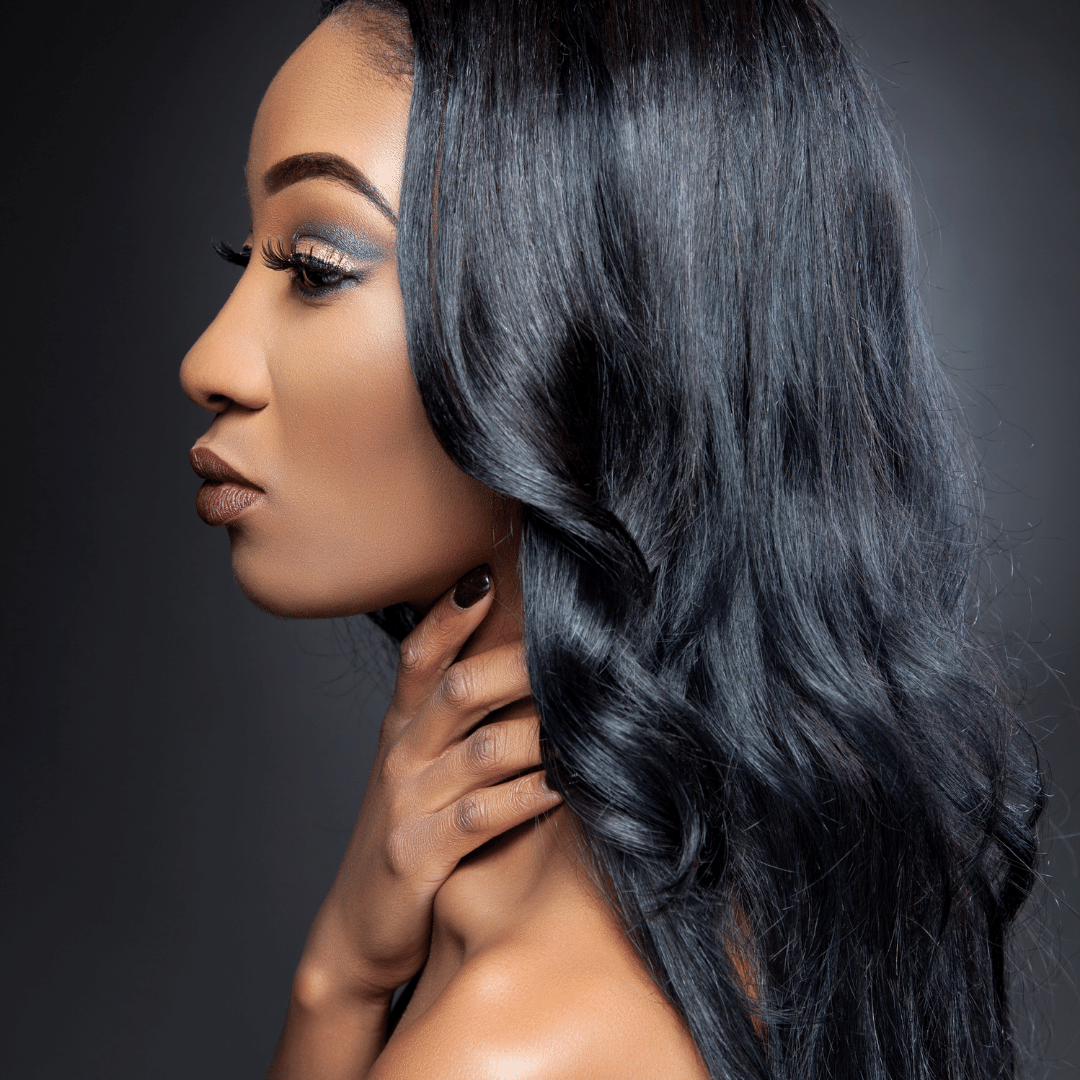
3. Moisturize:
As mentioned above, having a good balance of moisture and protein is key to preventing hair breakage. Use moisturizing hair products, to prevent dry and brittle hair.
Also, a good light daily moisturizer is good to keep handy in case you experience dryness between washes.
4. Deep Conditioners:
Deep conditioning after every wash will help keep your hair moisturized and balanced. There are many types on the market and the best one will compliment the products that you already have in your hair care regimen.
For instant, if you have lots of moisturizing hair products, you may want to lean towards strengthening deep conditioners, or vice versa. Just remember to keep a good balance of both.
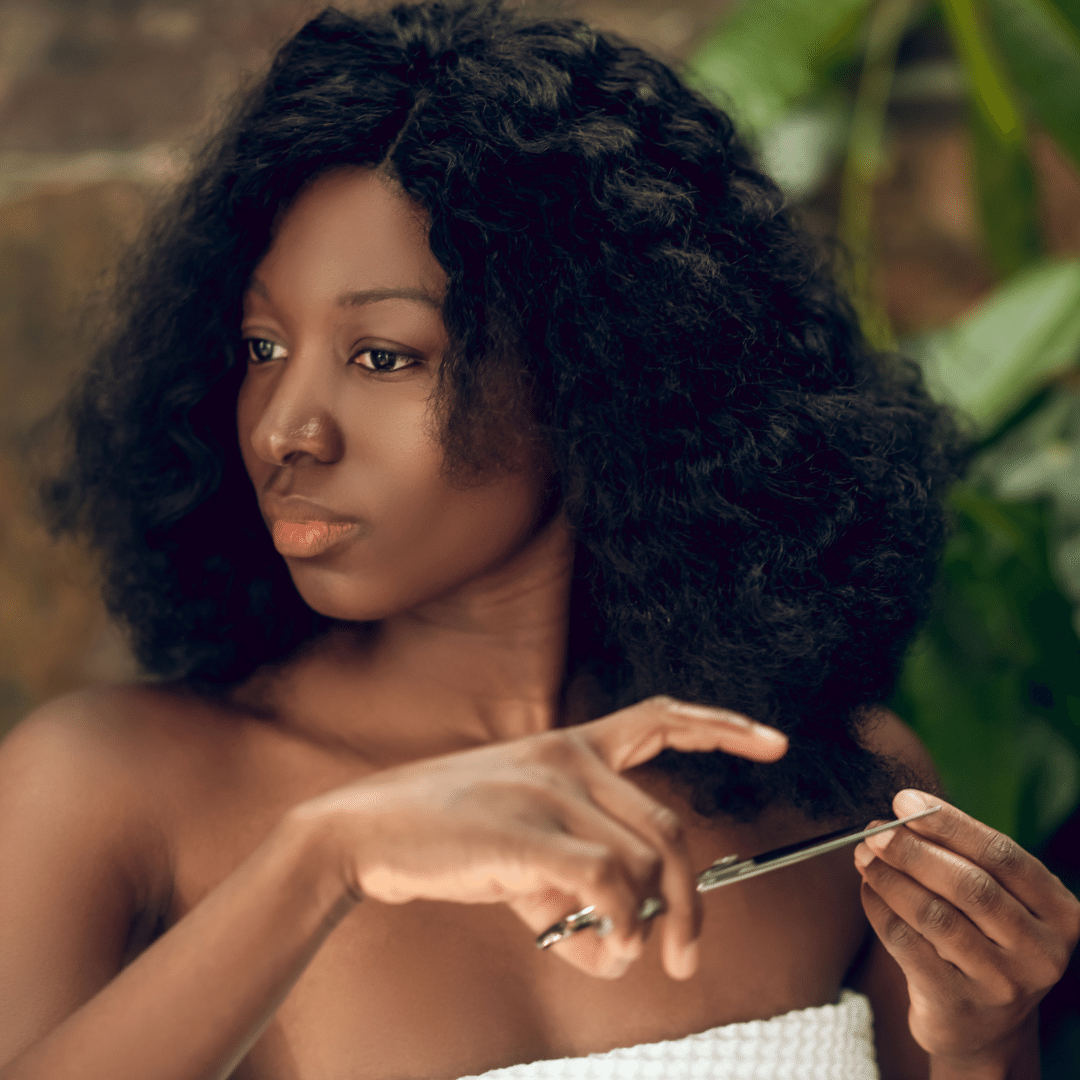
5. Regular Trims:
When you have relaxed hair it's important to schedule regular hair trims. Relaxed ends can be extremely fragile, so you'll need to pay close attention to your hair ends if you want to retain length.
Regular hair trims may be every three months or every 6 months depending on your own personal hair needs.
6. Protective Styles:
Wearing your hair in protective styles such as braids, buns, and up-do's, helps with length retention and reduces manipulation. Keeping your hair up and out of the way essentially keeps it out of harm.
7. Limit Direct Heat:
This tip is by far the best tip for relaxed hair. Heat damage is avoidable with the use of non-direct heat methods such as air drying and hooded dryers.
Limit the use of direct heat items like curling and flat irons and your hair's overall healthy will improve in not time!
TRANSITIONING HAIR TIPS
Help For Relaxed To Natural Hair
Below you will find 5 steps to help you transition from relaxed to natural hair within a matter of months.
1. Transitioning Relaxed To Natural Without The Big Chop
Many women don't want to cut their hair in order to transition from relaxed to natural. They opt for the long term transition.
This is where the natural hair is grown out without cutting the relaxed ends until you are comfortable with the length. Waiting a period of 6 to 18 months before cutting your hair will give you 3 to 9 inches of hair.
If you're looking to avoid cutting your hair too early just follow these steps repeatedly throughout your entire transition.
2. Transitioning Hair Styles Tips
Protect your hair while going natural. This is extremely important to protect against breakage and damage. Here are a few ways to protect your hair for maximum hair growth during your transition:
*Limit heat
*Cover hair at night with a silk or satin covering
*Wear protective styles such as buns, updos, braids or weaves.
*Keep hair moisturized daily
*Avoid products with mineral oil, sulfate, and petroleum

3. Moisturizing Transitioning Hair
Transitioning hair needs moisture. Natural hair that is curly has harder time retaining moisture. Natural oils have a harder time traveling down the hair shaft of curly tresses.
You can use natural hair care products that are rich in nutrients that deeply penetrate the hair shaft to make hair softer and more manageable.
Moisturize daily. This is a must to maintain healthy hair that grows.
4. Be Patient With Your Transitioning Hair Before You Big Chop!
It takes a few months for you to transition and you must be patient with your hair during this process.
Cutting your hair too early may be a shock to you. Curly hair appears shorter due to shrinkage after it's dry. Be mindful of this when checking the length before doing the " big chop ".
While you're transitioning, this would be a good time to see what types of products, styles and methods work best for you hair.
Take your time and start a journal or diary to chart your progress. This will help you to see how far you've come. It also gives you a little inspiration along the way.
5. Encourage Yourself With Support
You're not alone! There are several women that have been right where you are. They are actively helping other women transition to natural hair.
Many have successfully transitioned with natural hair support. They have videos, blogs, photos, recipes, and styling techniques.
They're also willing to share their journey with you!














